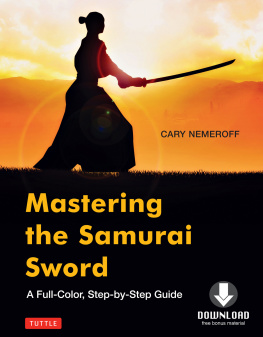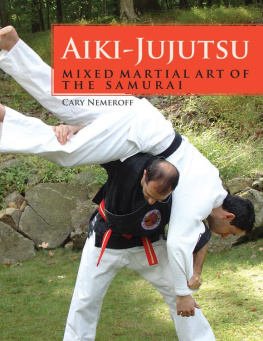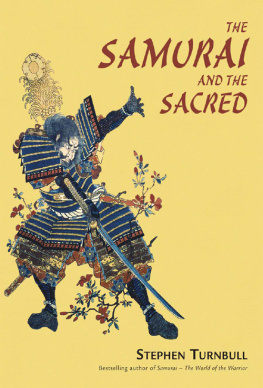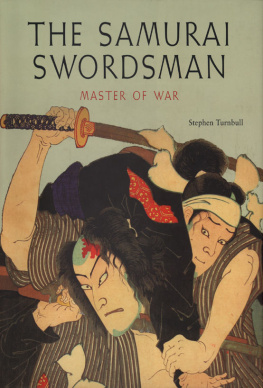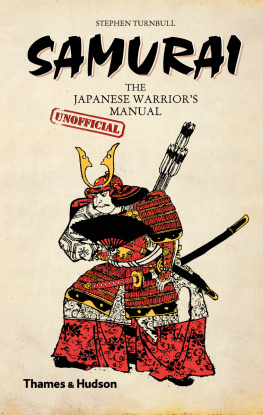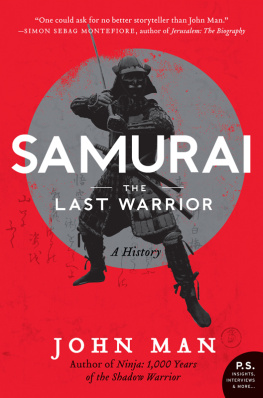Acknowledgments
I want to acknowledge all the people who helped bring this text to completion. First and foremost, I want to thank my mother, Sandy Nemeroff, for playing a most integral role in editing the entire manuscript, including text and pictures. Without her, this work would have not appeared so eloquent in every facet.
I also want to thank both of my parents for enrolling me in the martial arts as a young boy. Their persistence and constant encouragement throughout my life continue to give me the confidence to pursue my dreams.
And my wife, Tsen-Ting, who understands and appreciates the commitment that I have to the martial arts, re-ignited my interest in writing this book and regularly motivated me in this endeavor until its conclusion.
I want to honor my teacher, Rod Sacharnoski, Soke, who continues to inspire me through his philosophy and mastery of martial arts technique. It is his generosity, trust, and patience that have sculpted me into the martial artist that I am today. I am honored that he would write such a foreword for this book.
Next, I thank my student Greg Zenon, Kyoshi, the Fukasa-Kai Photographer who photographed all the fabulous pictures in this text, for forgoing the opportunity to demonstrate your proficient iai/ken-jutsu technique, in order to share your masterful skills as a photographer.
To David George, Sensei, for allowing me to utilize his beautiful dojo, Lehigh Fukasa-Kai, which captures the essence of an ideal dojo setting.
And my thanks to all my devoted students who contributed in some way through the pictures of this text: D. Nemeroff, Shihan; G. Zenon, Kyoshi; A. Cabrera, Kyoshi; N. Gordon, Sensei; D. DerSarkisian, Sensei; D. George, Sensei; and L. Hernandez. Thank you all for donating your time, energy, and positive attitudes during that long and enduring day of pictures that extended into the early hours of the next morning. I am honored to have such fine students, who put their hearts, souls, and skills into this aspect of the publication.

How to Download the Bonus Material of this Book.
1. You must have an internet connection.
2. Click the link below or copy paste the URL to your web browser.
http://www.tuttlepublishing.com/mastering-samurai-sword-downloadable-cd-content
For support email us at .
Authors Biography
A teacher of the Okinawan and Japanese martial arts, Cary Nemeroff has merged his interests in education, persons with disabilities, and the Asian combat arts into a full-time career. He has earned a B.A. in philosophy from New York University as well as an M.A. in education from Teachers College, Columbia University. He also has studied and is proficient in sign language. His martial arts training began as a young boy in 1977, under the auspices of Juko-Kai International, a martial arts organization accredited in both Okinawa and the mainland of Japan. His passion and skills as a martial artist grew in adolescence, and he ultimately became the personal student of Dr. Rod Sacharnoski, president of Juko-Kai International. This relationship continues today. Cary has earned ninth-degree black belts in a variety of Okinawan and Japanese samurai martial arts, including iai-jutsu and ken-jutsu, the subject of this book. And he recently earned tenth dan recognition in Fukasa-Ryu bujutsu that includes iai-jutsu and ken-jutsu as well.
Cary is founder and president of Fukasa-Ryu Bujutsu Kai, a martial arts organization that is a member of the International Okinawan Martial Arts Union and is accredited and sponsored by the Zen Kokusai Soke Budo/Bugei Renmei.
At present, Cary conducts an extensive program of group classes for adults and children, including specialized classes for children with physical and cognitive challenges such as autism, at the Jewish Community Center in Manhattan, a state-of-the-art fitness and cultural facility located on New Yorks Upper West Side. Among the martial arts he teaches are the samurai sword (iai-jutsu and ken-jutsu), aiki-jujutsu (a Japanese, bare-handed method of self-defense used by the samurai to disarm an armed opponent), karate, and toide (Okinawan throwing and grappling). At other venues, he also provides individual instruction and training, and conducts clinics for schools affiliated with his own organization.
He can be reached through the Fukasa Kai website, www.fukasakai.com.

Chapter 1
The History of the Samurai Sword
The samurai sword as we know it today evolved as a practical weapon used regularly in battle. As the needs of Japans warriors changed and evolved over more than a thousand years of history, so too did their armaments. This development of the samurai sword is often organized into four key periods: Chokuto , or Ancient Sword; Koto , or Old Sword; Shinto , or New Sword; and Shin-shinto , or Modern Sword.
Although today the samurai sword is used for different purposesfor exercise and relaxation, for meditation and important lessons of disciplineunderstanding its history is an important part of understanding the modern methodology of its use.
CHOKUTO OR ANCIENT SWORD PERIOD
The birth of Japan, like the birth of the samurai sword, is shrouded in myth and legend. We begin our journey through Japanese history with a warrior named Jinmu, who, perhaps during Christs lifetime, sailed from the Kyushu Islands to Honshu, the central and largest of the four main islands of Japan. Jinmu would become the first emperor of Japan, after defeating the hostile tribes inhabiting Honshus Yamato Province.
Legend tells us that this brave man was endowed with spirit from the gods. But even the gods couldnt bring stability to Japan: constant struggles for power and control of land would bring down emperor after emperor.
During the period extending through the ninth century of the Common Era, weapon making in Japan was based mostly on designs created by swordsmiths of Chinese origin and, to a lesser degree, craftsmen from Korea and Japan. The swords they created would likely have been of the Chokuto, straight-edge type, modeled after the one-handed jien (sword, in Chinese) or ken (Japanese pronunciation), with straight, double-sided blades. In 645 CE, the Taika Reform established the supremacy of the imperial family, making the emperor the absolute ruler of all Japan. In 710, the capital of Japan was established in the Yamato Province at Nara, marking the beginning of the Nara period (710784). Japanese nationalism slowly gathered momentum, setting the stage for a great leap in Japanese sword design.
According to legend, a swordsmith named Amakuni (circa 700 CE) observed scores of samurai he had outfitted returning from battle with broken blades. Saddened by the flaws in his work, he sought to produce a superior tool that would return unscathed from the heavy use typical during battle. Amakuni and his son prayed for spiritual guidance, disappeared into his shop, and emerged about a month later with superior ore and tempering methods that resulted in what would become known as the first samurai swords. But new materials and methods were not Amakunis only contribution to the development of the samurai sword: purportedly, he was the first to create the superior one-sided, curved tachi blade.
Parallel to the refinement of sword-making skills, a myriad of combat techniques proliferated from experience with the sword on the battlefield, as well as in individual duels between samurai who employed the grand weapon. Its arc shape not only gave it martial prowess in terms of sword strength, but also enabled its user to draw the weapon much more efficiently than the straight-edged type. With it, samurai could draw and fight at a moments notice, unlike those armed with the older, long and clumsy straight blades. Amakunis modification of the samurai sword was perfectly timed: With Japans growing nationalism came the need for augmentation of samurai sword production, in order to meet the needs of the national army which defended the emperor against potential usurpers.

